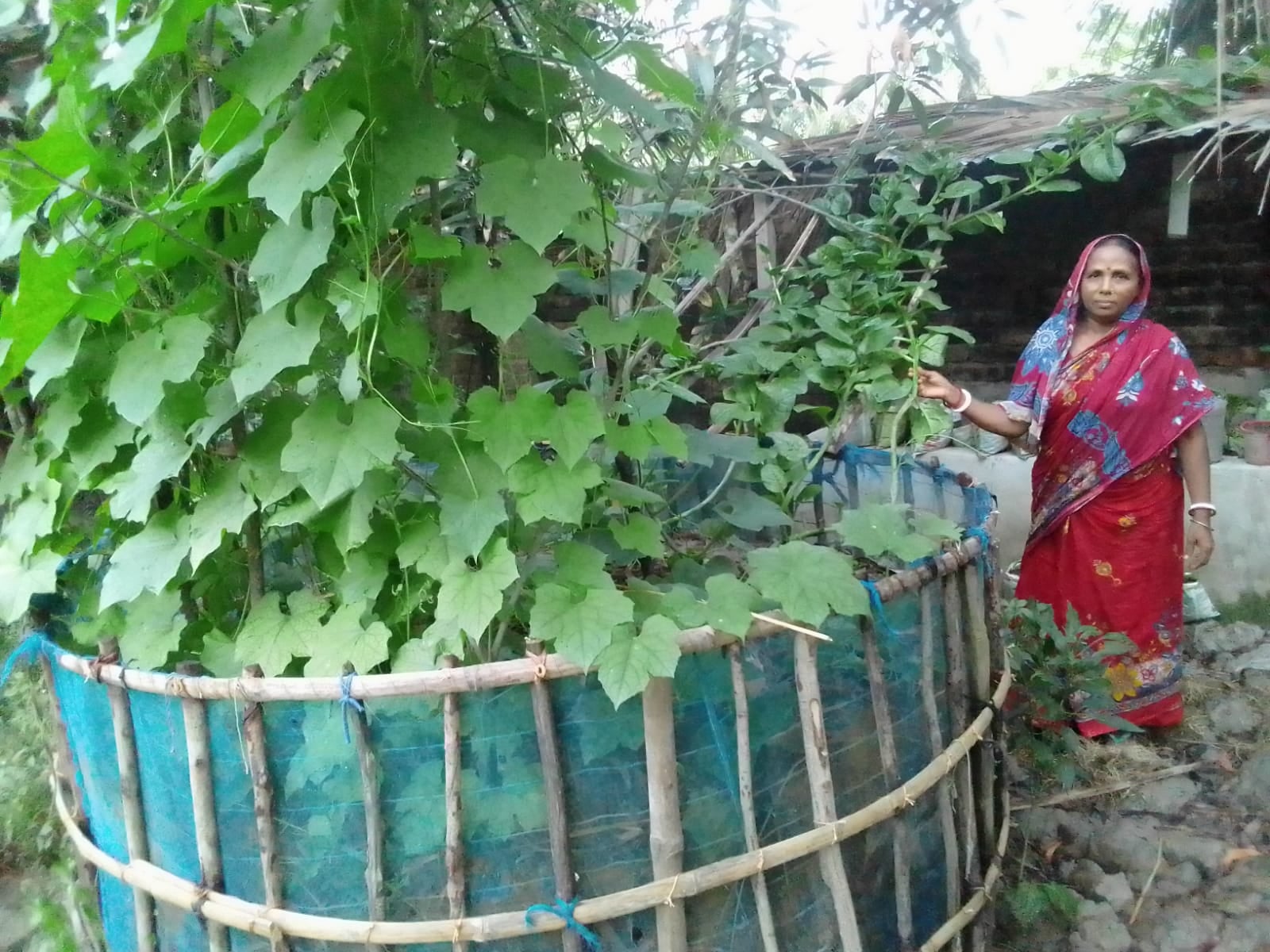By Ranjit Barman, from Shyamnagar, Satkhira
People in Bangladesh’s coastal region live with constant uncertainty. Drought, salinity, river erosion, waterlogging, and heavy rainfall strike one after another, leaving little scope for cultivating crops of choice. Yet, amid these recurring disasters, local farmers are showing resilience by using their skills and indigenous knowledge to adapt and grow food year-round.
One such farmer is Sarma Rani (46) of Mathurapur village in Munshiganj Union, near the Sundarbans in Shyamnagar upazila of Satkhira. Despite her husband’s illness and limited family resources, she has become a leading practitioner of agroecology. With only 66 decimals of land where 46 decimals for paddy cultivation and 20 decimals for homestead farming, she produces vegetables throughout the year. She also leases about two bighas of land annually for rice cultivation.
Using organic methods, Sarma grows a wide variety of vegetables such as bottle gourd, pumpkin, beans, brinjal, okra, spinach, cucumber, yam, drumstick, bitter gourd, and taro. She also grows eight varieties of chili along with ginger, turmeric, and the local spice chui jhal. Her homestead is enriched with fruits like mango, black plum, coconut, wood apple, sapodilla, lemon, rose apple, custard apple, pomegranate, papaya, and banana. She conserves and consumes various uncultivated plants such as helencha, kolmi, adabrun, senchi, ghima, and pepul. Alongside crops, she raises fish (tilapia, carp, shrimp, crab, etc.), and keeps ducks, chickens, and pigeons.

With the aim to adapt to changing climatic conditions, Sarma applies innovative farming methods such as tower farming, sack and basket cultivation, trellis farming, and crate cultivation. She creatively reuses plastic buckets, jars, and bottles as planters. She also prepares and applies organic pesticides using neem, mahogany fruit, garlic paste, cow dung ash, tobacco, and molasses. Additionally, she preserves dry foods as emergency supplies during disaster periods.
Her farm has gradually become a learning center for agroecology. In 2018, BARCIK recognized her farm as a biodiversity-rich “Shotobari (Nutrition Bank).” Since then, Sarma has been working to expand it into a community-based agroecology learning hub. She conducts training sessions on organic pesticide preparation, seed conservation, and group formation, while maintaining her own seed bank for seasonal exchanges. Inspired by her, many women farmers in the area including Shyamoli Rani, Nisha Rani, and Sujata Rani have started vegetable cultivation.
Sarma said that her determination comes from hardship. After marriage, she found her husband’s single bigha of land insufficient for survival. She worked alongside him, managed homestead farming, took leased land, and eventually bought another bigha of land from her earnings. From agriculture, she supported her four children’s education and married off her three daughters.
Visitors from NGOs, government officials, and local organizations regularly visit her farm to learn from her practices. She now seeks greater institutional support, especially for access to organic inputs such as cow dung for composting, since she does not own cattle. Farmers and experts alike believe that women like Sarma Rani, who are pioneering sustainable farming in disaster-prone areas, deserve wider recognition and government support to scale up their efforts.
